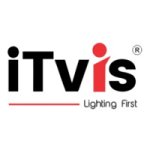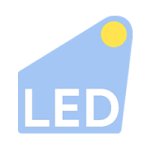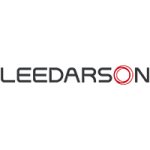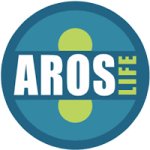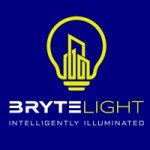Table of Contents Hide
- 1 Technology Advances are Converging Today to Create Advanced Smart Lighting Solutions
- 2 What is Smart Lighting
- 3 LED Technology Spurred Lighting Automation
- 4 Smart Lighting Concepts
- 5 Levels of Adaptation
-
6
Types of Smart Lights
- 6.1 Smart light bulbs
- 6.2 Smart street lights
- 6.3 Smart light fixtures
- 7 How Do Smart Lights Work
-
8
Network Communications
- 8.1 Wired Solutions
- 8.2 Wireless Solutions
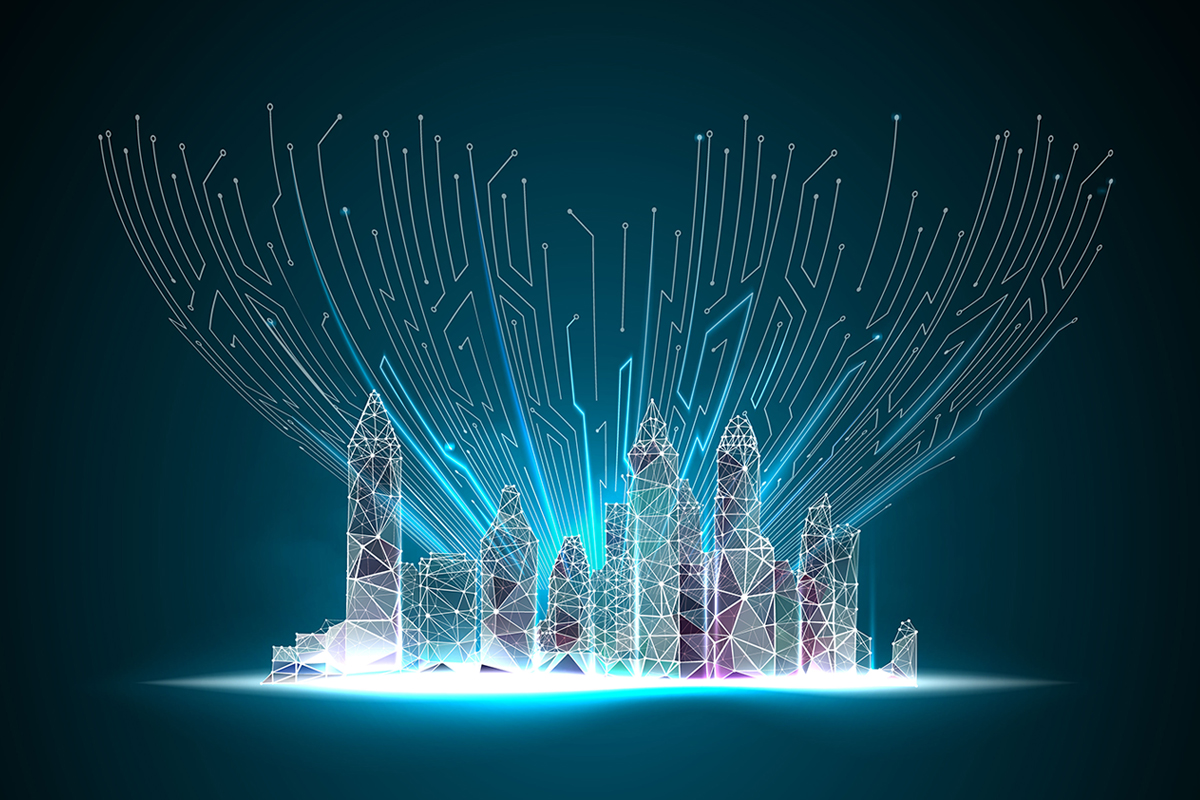
Technology Advances are Converging Today to Create Advanced Smart Lighting Solutions
The lighting industry continues to make the transition to LED technology for the advantages it provides over incandescent, fluorescent and HID lighting. What kicks off this irresistible trend is evidently the long-awaited demand for a light source with low energy consumption, extended product life, long maintenance cycles, and reduced environmental impact. What most people don't realize is that smart lighting has been advancing in leaps and bounds concurrently. The advent of solid state lighting unexpectedly created a profound transformation in the human interaction between lighting devices and their applications. And its convergence with digital control and network communication is opening up new possibilities for smart buildings and smart cities.What is Smart Lighting
Smart lighting, also referred to as adaptive lighting, is about adding intelligence or logic to lamps or luminaires so that the lighting can communicate and interact with the environment, building occupants and other devices in an automated way. Smart lighting brings flexibility and automation to a lighting infrastructure for controlling a multitude of lighting features from simple on/off switching to complex adaptive lighting. Whether to maximize energy savings for a commercial facility or to provide convenience to users in a private residence, smart lighting control provides an intelligent translation of such needs between the lighting devices and the environment with minimal human intervention. From a single luminaire with a connection structure of point-to-point, through to luminaires grouped into an interconnected mesh network, smart lighting systems are available to work across all project sizes and communicate using a wide variety of protocols over various communication channels.LED Technology Spurred Lighting Automation
A light-emitting diode is a semiconductor device that emits light when charge-carriers (holes from the p-region and electrons from the n-region) flow toward each other and recombine in the P-N junction upon application of an electric current. This emission mechanism, known as electroluminescence, allows accurate control of the light spectrum and intensity. The ability to work seamlessly with other solid state circuits makes LEDs a digital light source that is reshaping the role of lighting. Digital lighting technology plays as transformative a role in a smart city infrastructure or smart home system as devices controlled by electronic logic circuits or processors. Smart LED lighting delivers value beyond user convenience and energy efficiency. With digitally controlled full range dimming, correlated color temperature (CCT) tuning and additive color mixing which are unique to LED technology, lighting can be easily tuned to trigger positive physiological, emotional and biological responses.Smart Lighting Concepts
As the technology evolves, smart lighting becomes a term that encompasses a number of concepts. Switching or dimming lighting on a user defined schedule or upon motion detection might have been called smart lighting technology 10 years ago. What we perceive today as smart lighting is an intelligent infrastructure that consists of lighting nodes, sensors and other smart devices connected to interoperate with each other via an Internet platform. A smart light, in its simplest form, is a programmable lighting device that can communicate with a remote controller over a wired or wireless network. Smart lighting does not necessarily need to be equipped with Internet-based lighting control and sophisticated sensor-driven algorithms. It can be a point-to-point system that provides adaptation on demand using local sensors or individual local controls. In general, the concepts of smart lighting fall into three categories:1. Localized smart lighting focuses on adding a bidirectional communication link between a lighting controller and lighting device without considering scalability and interoperability. It allows remote configuration, status monitoring, management and programming of only the connected lighting devices. Localized smart lighting is typically a proprietary solution that works independently on its own ecosystem comprised of dedicated hardware and software. For example, a network of smart light fixtures that run on Remote Device Management (RDM) (a 2-way communication protocol based on DMX512) or proprietary Ethernet protocols is a localized lighting solution. Any wireless smart lighting system that supports only short range point-to-point communication can be considered a localized smart lighting device. Such devices include smart light bulbs that use the original Bluetooth protocol, known as Bluetooth Classic.
2. Network-based smart lighting goes one step further by standardizing communication protocols to add scalability and interoperability to smart lighting systems while reducing the pain of commissioning and pairing. Ubiquitous smartphone apps, wireless sensor networks and WPAN (Wireless Personal Area Networks) solutions contributed to the explosive availability of smart lights that allow easy installation and intuitive control. Smart lighting systems that communicate using standardized wireless protocols such as ZigBee, Z-Wave, Wi-Fi, Bluetooth Mesh, and Thread feature excellent scalability and overcome challenges with interoperability. Such lighting network effortlessly scales from a small number of lighting nodes to highly integrated installations of tens of thousands of smart devices that include not only smart lights, but also occupancy sensors and environmental sensors.
3. IoT-enabled smart lighting delivers additional networking capabilities to PANs (personal area networks) and BANs (body area networks). Internet of Things makes smart lighting on steroids. It incorporates processing capabilities, firmware, connectivity and an IP-based architecture to establish communication and interaction between all smart devices and the Internet. IoT unlocks the full potential of connected lighting by harvesting the data from connected sensors to create new insights and actionable information through a highly secure, scalable cloud-based platform. Compared with network-based smart lighting, IoT-enabled smart lighting scores with higher reliability, scalability, robustness, interoperability, and greater range for point-to-point connections. In IoT applications, lighting devices are either connected directly to the Internet or mediated through local or wide area networks.
Levels of Adaptation
Smart lighting is designed to provide adaptive illumination with greatly simplified lighting control. A smart light includes a controller or microprocessor that responds to signals generated by computers, smartphones, sensors, time clocks, or other smart devices. Depending on the control signal sources, smart lighting can have various levels of adaptation.Level 1 – Adaptation based on time scheduling
This strategy involves using a controller programmed to automate lighting control base on a time event. The time signal is provided by a time clock or software-based intelligence.Level 2 – Adaptation based on sensor activation
Presence/absence detection using occupancy sensors, e.g., passive infrared (PIR) detectors, microwave sensors, ultrasonic motion detectors and sound sensing detectors, can be used where illumination is needed only when humans are present. Photosensors provide daylight harvesting by measuring an increase in daylight illuminance and dimming or switching off the lights when a threshold is reached.Level 3 – Adaptation initiated by intelligent and integrated systems
The aforementioned intelligent and integrated systems include, but not limited to, building automation systems (BAS), energy management systems (EMS), smart home systems, and third party services. This strategy allows smart lighting to be triggered by a variety of events, which is not possible with self-contained smart lighting systems. For example, connecting a smart light to IFTTT (If This Then That), a cloud-based task automation platform, allows you to develop lighting rules based on events created by other smart nodes within a smart home network. These smart nodes can be thermostats, smoke and carbon monoxide detectors, security cameras, etc.Level 4 – Adaptation that uses a mix of above-mentioned strategies
Smart LED lighting offers intriguing possibilities in lighting automation. Interior lighting can be programmed to change gradually in color temperatures and light intensities over the course of the day in a way that mimics the effects of natural sunlight. Smart matrix LED headlights interact with the car's onboard camera system to regulate light output while integration with GPS makes it possible for the lights to perform predictive high beam control. A smart lighting system designed for commercial or industrial facilities can harness the insights created by an IoT platform to optimize its sensor-controlled operation for enhanced energy efficiency. These applications require a hybrid approach of adaptive lighting control.Types of Smart Lights
As with the concepts of smart lighting, smart lights have a great variation with regards to design considerations and product features because the end-user preferences differ a lot in residential, commercial and outdoor lighting markets. Here's a roundup of smart lighting products targeting these markets.Smart light bulbs
Smart light bulbs are an entry-level investment for anyone who aspires to explore the delight and magic of smart lighting. The consumer market has an increasing interest in this type of smart lights. Energy efficiency isn't a compelling feature that appeals to consumers. It's the extraordinary lighting experiences that make them highly admired smart home gadgets. Change the color temperature and intensity to support your natural circadian rhythms with human centric lighting. Navigate the color palette to create vibrant, colorful scenes. Sync lights to your favorite music, TV and games for an immersive experience. Wake up in the morning with a gentle ambiance. Integrate with motion sensors to add an extra layer of security and safety. Connect the lights to Amazon Alexa, Apple HomeKit, or Google Assistant to enjoy the convenience of hands-free lighting. Use with IFTTT to trigger lights based on signals created by other connected devices and services. Smart light bulbs provide a plug-and-play solution to facilitate your home's transition to smart lighting. Simply screw the bulb into the sockets of existing fixtures and lamps, no rewiring, no need to hire an electrician.Smart street lights
Street lighting is one of the largest energy expenses as well as one of the most valuable assets for a city. Adding intelligence and communications capabilities to street lights enables remote control and management of widely distributed light fixtures from a central management system and makes it possible for aggressive control of the streetlight illuminance. While smart street lighting delivering enormous energy and maintenance savings, IoT-enabled street lighting transforms the way municipalities manage cities. Ubiquitous distributions across urban and rural areas of street lights enable a connected network that can be the backbone of the IoT in smart cities. Insights provided by IoT data analytics squeeze all the energy savings potential out of intelligent lighting control whilst enabling a multitude of smart city services such as weather monitoring, traffic control, emergency broadcast, environmental sensing, digital advertising, and video surveillance.Smart light fixtures
Manufacturing facilities, warehouses, office buildings and retail environments provide numerous opportunities to leverage the power of intelligent lighting control to maximize energy efficiency while enhancing the working environment. Smart light fixtures incorporate occupancy sensors, photocells and time clocks to optimize light delivery. The integration of intelligence and networking allows the fixtures to communicate with each other and with a centralized control system. When run on an IoT platform which handles data collected from connected lighting nodes and sensing devices and enables zone-based control of fixture groups, the connected lighting infrastructure radically drives down energy consumption and delivers enhanced comfort, health and productivity for occupants.How Do Smart Lights Work
A smart light typically include an LED module, a microprocessor, a constant-current (CC) LED driver, one or more transceiver ICs (e.g. a ZigBee, Wi-Fi, Z-Wave, or Bluetooth radio) and sensing devices which can be either integrated into the lamp/luminaire or externally located. The driver regulates load delivered to the LED array while powering the transceiver, microprocessor, sensors, and other output devices. The driver receives pulse width modulation (PWM) or other digital signals from the microprocessor to control the dimming and switching of the LEDs. In CCT tuning and RGB/RGBW color mixing applications, each LED channel is individually dimmed. The digital signals are based on events and instructions communicated from a smartphone, hub or the cloud via a wireless network. The microprocessor also controls the LED array based on the input received from connected sensors.Most smart lights need a gateway, bridge or base station, which is more commonly known as a hub, for the smart lights to communicate. Wi-Fi and Bluetooth devices do not need to hop to a hub. The hub which can be configured to support multiple smart lights is a data coordinator that serves to establish a link between the light controller (microprocessor) and the web server, smartphone or tablet. Lighting management software and algorithms running in the IT network or the cloud gather and analyze data to deliver advanced analytics and actionable reports while providing easy management of lighting system. The widespread use of smartphones, tablet PCs, and high-speed Internet allows lighting management on-the-go via an iOS or Android mobile app which provides a dialog interface between users and smart lights.
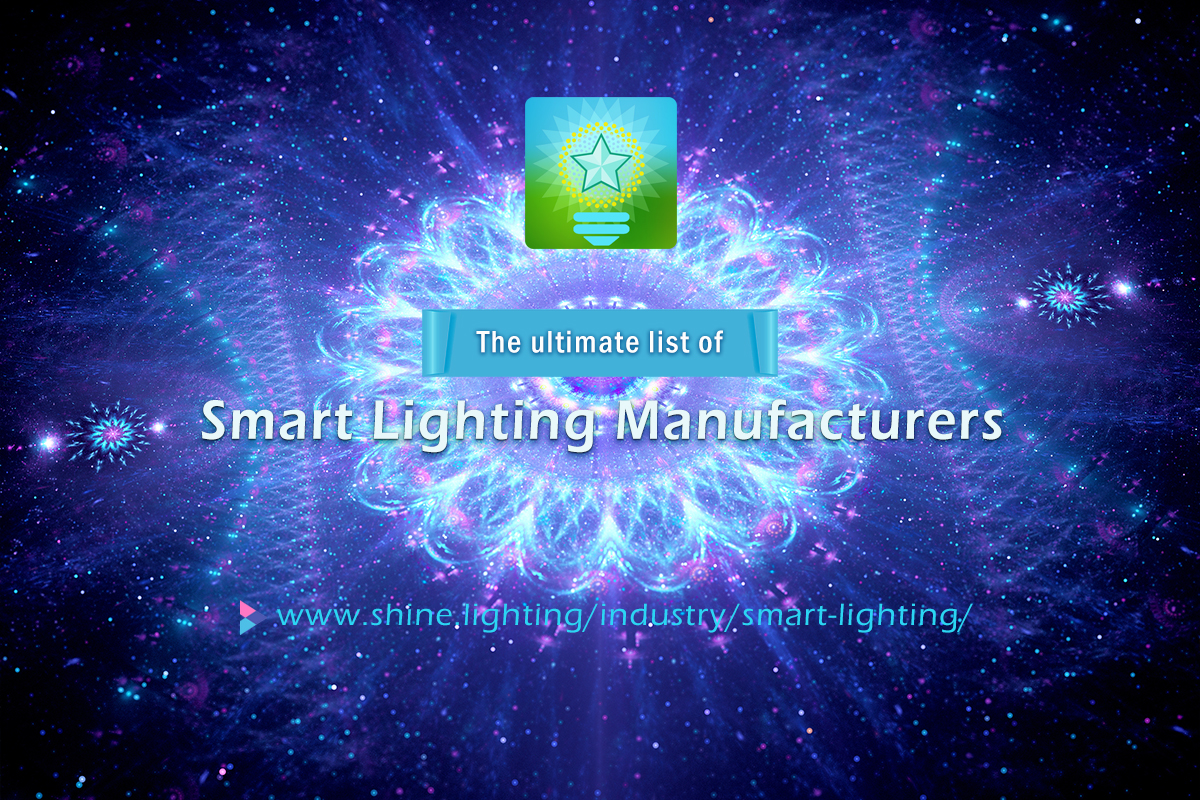
Network Communications
Smart lighting relies on an information carrier, such as the Internet or the like, to make the lighting nodes individually addressable and digitally controllable. Network connectivity is essential in establishing a communication between the lighting nodes and the information carrier. Smart lighting is usually considered to be composed of wireless devices. However, this is not to say that the wired solution is without its merits. Wired networking technology has advantages of high communication reliability and high data transport capacity over larger distances. It thus can be a data backbone of an IP infrastructure in commercial buildings. Wireless networking is becoming increasingly popular for smart lighting for it inherent flexibility, easy installation and low deployment cost advantages over cabled solutions.Wired Solutions
Power over Ethernet (PoE) delivers power and communication data across a single standard Ethernet cable (i.e., cat 5) directly to the network port of the connected devices. PoE technology is regulated by the IEEE 802.3 standard which specifies the physical and data link layer media access control (MAC). The maximum allowable cabling length for PoE communication is 100 m (total) between the PSE (power sourcing equipment) and PDs (powered device). PoE provides ease of system implementation and commissioning, which dramatically facilitate the integration of the IoT into commercial buildings.Power line communications (PLC) is another example of wired networking implementation. It delivers communicating data by impressing a modulated carrier signal over the same medium that is also used to transmit electric power. PLC technology is primarily used for controlling and monitoring street lighting luminaires.
Wireless Solutions
ZigBee provides a specification for a suite of high level communication protocols which use small, low-power digital radios based on an IEEE 802.15.4 standard for wireless personal area networks (WPANs). It employs destination-based routing to deliver packets to individual nodes of the network with a communication rate up to 250 kbps and a coverage radius up to 1000 meters. ZigBee is one of the most popular wireless communication protocols in today’s smart home networks.Z-Wave is another interoperable wireless RF network protocol similar to ZigBee but has a lower transmission rate (9.6Kb/s to 100Kb/s) and less capacity (maximum 232 nodes per network). It uses a source-based routing scheme to deliver packets through the mesh network to the recipient. It operates at about 900 MHz ISM band and thus has lower interference compared with other network technologies utilizing the crowded 2.4GHz frequency band.
Wi-Fi is a wireless local area network (WLAN) technology with a number of versions of the protocol including 802.11a, 802.11b, 802.11g, IEEE 802.11n, and 802.11ac. Wi-Fi operates in both the 2.4 GHz and 5 GHz bands with a RF range of approximate 100 m (330 ft). The IP-based protocol operates using star network topology in either Peer-to-Peer (ad hoc networks) or infrastructure with one root (access point) and wireless nodes (clients).
Thread is an IPv6-based mesh networking protocol with 6LoWPAN header compression and mesh capabilities for maximum routing efficiency and redundancy. Thread network topology leverages redundant border routers to ensure that there is no single point of failure, making it suitable for mission-critical industrial applications where system outages can have major financial impacts. Thread devices operate in 868, 915, and 2400 MHz frequency bands, with a data rate of 252 Kbps, and communication range of approximately 10 m.
Bluetooth Low Energy (BLE) or Bluetooth Smart provides direct, peer-to-peer communication between nodes in a wireless personal area network (WPAN). Bluetooth can be integrated into all major operating systems and supports 6LoWPAN. It operates in the 2.4GHz ISM band and has a maximum speed of 50 MB/s and distance of 242 m (800 ft). BLE has a star topology. Bluetooth mesh networks make radio systems more reliable by allowing lighting nodes to relay messages for other nodes.
6LoWPAN (IPv6 Low-Power Wireless Personal Area) is a networking technology that carries packets of data in the form of IPv6 over IEEE 802.15.4 frame. 6LoWPAN was developed as an adaption layer as an adaptation layer between the IPv6 networking layer and the 802.15.4 link layer to bring IPv6 to Wireless IoT devices. This protocol defines encapsulation and header compression mechanisms and also handles the end-to-end fragmentation of the IPv6 packets.
EnOcean a proprietary RF protocol that allows energy harvesting from any slight variation in the environment to create power for signal transmission. Thus, EnOcean devices are self-powered (battery free). EnOcean operates in ISM frequency bands of 868 MHz, 315 MHz, 902 MHz, 928 MHz and 2.4 GHz, with a maximum data rate of 125 Kbps, and a signal range is up to 30 meters indoors and 300 meters in the open.














